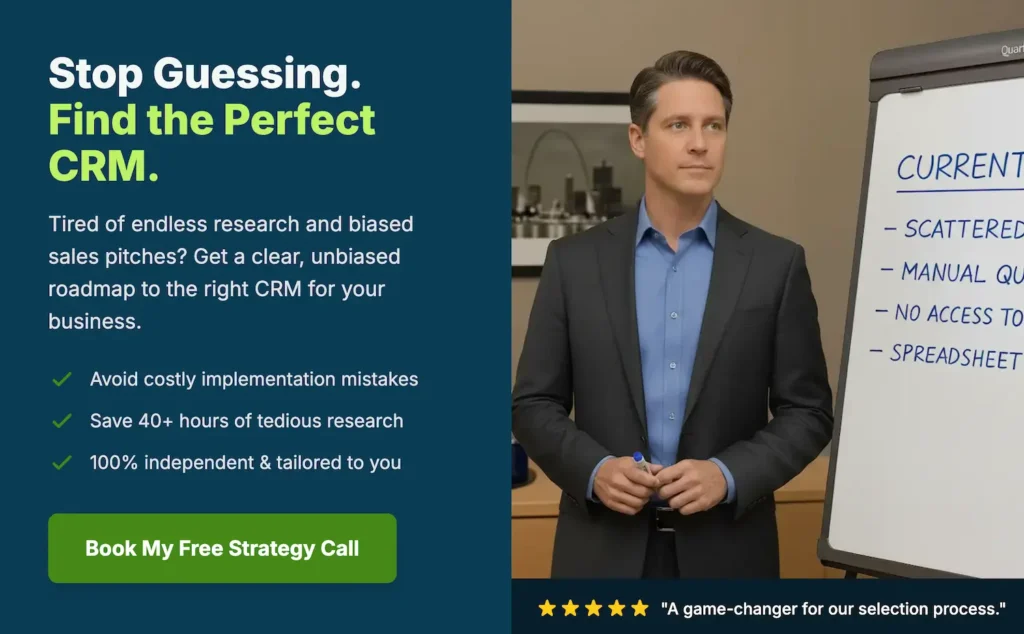Maintaining relationships with customers can be challenging. With or without a CRM system, some businesses will always be better at it than others.
Maintaining good relationships is not something that happens automatically. It’s not something that can be fully automated.

What a CRM system will do, however, is make maintaining your relationships more effortless and more organized.
Your business will need a rock-solid CRM implementation strategy to get to that part. Success with CRM starts long before any users log in. Your entire organization (ideally) will need to be involved to ensure the system’s success.
The following five steps illustrate, in broad strokes, each phase of the process we walk our clients through when implementing a new CRM.
Step One: Executive Buy-In
The most crucial yet often overlooked aspect of any CRM implementation strategy starts with getting buy-in and support from executive management. Without it, a successful implementation becomes almost impossible.
Ideally, your organization’s leadership should push for CRM and steer the ship from selection all the way through deployment. Simply getting approval to purchase and deploy a system without any further engagement often signals to the rest of the organization that using it is not a high priority.
When executives embrace CRM and are engaged throughout the process, the likelihood of a successful implementation and high user adoption increases exponentially.
Step Two: CRM Selection
Step two of your CRM implementation strategy is choosing the right CRM system for your business. Choosing a CRM system simply because it’s the cheapest or rated the highest on G2 Crowd this year will not do you any favors.
To correctly choose a CRM system, you must thoroughly evaluate and document your business requirements and select which system best meets those requirements.
You may select a platform like Salesforce if you have complex needs and requirements. If your needs are relatively simple, a system like Zoho, Insightly, or Nimble may be just the ticket.
Step Three: Deployment Roadmap
Creating a roadmap for how your newly selected CRM system will be deployed is essential. This plan should codify your short-, medium-, and long-term goals for deployment and user adoption.
If your CRM implementation strategy doesn’t include some kind of roadmap or blueprint, you risk a sort of “free-for-all” that often leads to frustration and, ultimately, failure.
That said, your deployment roadmap may not need to be as complex as you first think. Rolling CRM out to a few users to iron out the bugs and develop new procedures can make a massive difference in subsequent user adoption.
Step Four: System Training
We can’t count the times we’ve had calls from prospective clients complaining about spending considerable money on a new CRM system, only to watch their employees comprehensively ignore or work around it.
The first question we ask is, “Did you put your employees through a training program for your CRM system?” The answer is almost always “no.”
Users need to understand why the tool is being implemented and how to use it effectively to improve their workflow. A lack of training (and, thus, a lack of knowledge) is one of the most common reasons for resistance when deploying a new CRM system.
Managers and leadership often become very familiar with the chosen system during the selection process and while developing a deployment roadmap. Your end-users, on the other hand, will have no experience with the tool until they’re trained on it.
Every CRM implementation strategy should have a plan and time budgeted for user training. This will decrease pushback, increase adoption rates, and boost morale all at the same time.
Step Five: Deployment
Inevitably, every CRM deployment has bumps in the road. The difference between successful and failed deployment is how your team handles those bumps.
Don’t be surprised (or get too frustrated) if things don’t work exactly how you planned for them on day one. When a problem crops up, that’s the time for leadership to show their support for the system and find a solution rather than abandon ship.
It’s also important to know what kind of customer support options you have available to you. Different CRM vendors offer different levels of support. In general, however, many CRM vendors offer support only through online ticket systems or a knowledge base to answer questions. This is why many businesses work with a professional CRM implementation specialist.
Getting Professional Assistance
Working with a professional can be beneficial regardless of where your organization is in the CRM process.
From helping refine your CRM implementation strategy to acting as a mediator and/or impartial third party to help navigate an impasse with management – an experienced implementation specialist can bring clarity to your process.



